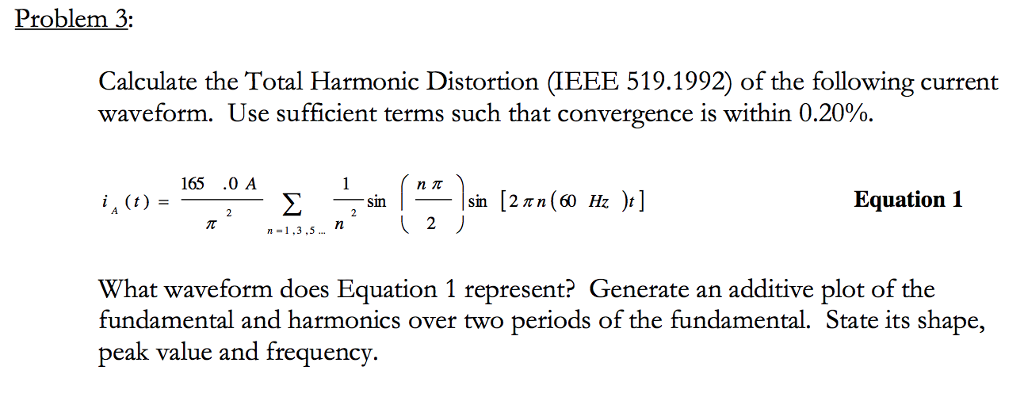

Harmonics in power systems can have very small amplitudes, reaching -30 dB or less than the fundamental frequency, but the power they carry adds up over hundreds of harmonics. Whenever the harmonics (components with n > 1) are non-zero, you have harmonic distortion. Input voltage waveform in terms of its harmonics. Thanks to Fourier analysis, we can write the voltage (or current) of an AC waveform as a sum of some fundamental frequency (50 or 60 Hz in power systems) and all of its harmonics. The latter can be defined in terms of the former and can be measured in the time domain. In power systems engineering, THD and power factor are most commonly used to quantify the extent to which an AC waveform deviates from an ideal sinusoidal waveform.
Total harmonic distortion generator#
The distorted voltage/current that gets measured from mains or generator power deviates from an ideal sine wave in terms of its magnitude, although slight variations in frequency and phase can also occur. When a power supply or power converter draws power from AC mains or a generator, it’s common for the waveform to be a bit distorted when viewed on an oscilloscope. So where does this harmonic content come from, and what can you do about it in your design? The key is to control or compensate for nonlinearity in your circuit design, and following some basic layout practices can help ensure power supply noise is contained. Multiple disciplines in engineering use total harmonic distortion as a metric for quantifying the quality of power supplied to your electronics.

If you’re a power supply or power systems designer, then you know the value of supplying your devices with clean, noise-free power. When you take dirty power, put it through rectification, and then pass it through a switching regulator, you introduce additional noise into the system that further degrades power quality. Unfortunately, this is not the case, and although a power system can appear to output a clean sine wave, zooming into an oscilloscope trace or using an FFT will tell you a different story. It would be nice if, at least in the US, the power that came from the wall was truly noise free.


 0 kommentar(er)
0 kommentar(er)
